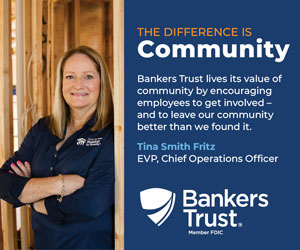Virtual port online as physical plant is pondered

.floatimg-left-hort { float:left; } .floatimg-left-caption-hort { float:left; margin-bottom:10px; width:300px; margin-right:10px; clear:left;} .floatimg-left-vert { float:left; margin-top:10px; margin-right:15px; width:200px;} .floatimg-left-caption-vert { float:left; margin-right:10px; margin-bottom:10px; font-size: 12px; width:200px;} .floatimg-right-hort { float:right; margin-top:10px; margin-left:10px; margin-bottom:10px; width: 300px;} .floatimg-right-caption-hort { float:left; margin-right:10px; margin-bottom:10px; width: 300px; font-size: 12px; } .floatimg-right-vert { float:right; margin-top:10px; margin-left:10px; margin-bottom:10px; width: 200px;} .floatimg-right-caption-vert { float:left; margin-right:10px; margin-bottom:10px; width: 200px; font-size: 12px; } .floatimgright-sidebar { float:right; margin-top:10px; margin-left:10px; margin-bottom:10px; width: 200px; border-top-style: double; border-top-color: black; border-bottom-style: double; border-bottom-color: black;} .floatimgright-sidebar p { line-height: 115%; text-indent: 10px; } .floatimgright-sidebar h4 { font-variant:small-caps; } .pullquote { float:right; margin-top:10px; margin-left:10px; margin-bottom:10px; width: 150px; background: url(http://www.dmbusinessdaily.com/DAILY/editorial/extras/closequote.gif) no-repeat bottom right !important ; line-height: 150%; font-size: 125%; border-top: 1px solid; border-bottom: 1px solid;} .floatvidleft { float:left; margin-bottom:10px; width:325px; margin-right:10px; clear:left;} .floatvidright { float:right; margin-bottom:10px; width:325px; margin-right:10px; clear:left;}
Port Des Moines’ Web site will act as an information clearinghouse and provide an outlet for Central Iowa companies looking to market themselves.
But until the feasibility of developing an intermodal or transload facility in the region can be determined, area importers and exporters may have to wait for a local physical location in which to load and unload their goods.
According to the Des Moines Area Metropolitan Planning Organization (MPO), the closing last year in Newton of Central Iowa’s only intermodal facility accelerated the need to evaluate the feasibility of creating a new one, as companies wishing to ship goods via rail must now transport their products to complexes in Council Bluffs, Chicago, Kansas City or other Midwestern cities.
On March 19, the MPO issued a request for proposals for a professional study to analyze current and forecast freight movements and modes of transportation.
The outcome of that survey, which will take into account the number of freight shipments originating and terminating in Central Iowa, will play a pivotal role in garnering the attention of railroads that may be interested in investing in or serving a local intermodal facility.
That’s according to Dylan Mullenix, senior transportation planner with the MPO.
“You need to have a certain number of containers or movements coming in and out of the area,” Mullenix said. “We are trying to get an accurate count of what that might be.”
He said an assessment of the types of commodities being shipped will also factor in.
In 2005, the MPO conducted a study that indicated a total of 3,000 shipping containers were being imported and exported monthly in Polk County.
“At the time, there probably wasn’t enough business to accommodate a physical facility,” Mullenix said, adding that he believes the actual number was likely more than 3,000 at the time and that he expects it has grown.
The MPO recently launched www.portdesmoines.org, which focuses on aggregating information and getting resources in front of companies that are new to the industry or those that are considering relocation.
Mullenix unveiled the site last month during the 2010 Global Transportation Forum in West Des Moines.
He called it a “virtual inland port.”
“The purpose of it is really to provide a one-stop shop for trade- and transportation-related information, linking all the different resources that are available in an area into one spot,” Mullenix said. He noted that the site includes information about railroads, roadways, air cargo services and warehouses, as well as U.S. ports of entry and the Iowa Foreign Trade Zone,
It also has a resources page with links to customs brokers, third-party logistics firms and financial institutions.
As the site is updated and expanded, Mullenix said, there are plans to add more interactive Google Maps that could be used, for example, to see where a railroad intersects with a roadway.
He would also like to create online some type of shipping container clearinghouse or co-op that could help more shipping containers find their way inland.
“If company A has a container coming in that they’re going to load and ship back empty, maybe if they can connect with company B through some sort of Web portal, it would make more sense for everyone involved,” Mullenix said of that idea.
“We in the Midwest are faced with some real challenges with changes in the way steamship lines have to do business,” said Tim Woods, president of the International Traders of Iowa and the transportation forum’s organizer.
In February, Woods told the Business Record that the number of shipping containers making their way to the Midwest from the coastal areas had diminished, while export demand for containers remained steady.
According to the executive summary of a 2001 feasibility assessment of the Port Des Moines concept by Iowa State University’s College of Business, “An inland, intermodal port that would facilitate international and domestic commerce; it would support export and import opportunities by consolidating at a single source all the services related to trade, licensing, loading, storage, light assembly and bonding.”
Mark Steinbach, terminal manager of Forward Air Inc.’s Des Moines office, said a recent shipment to Chicago from Germany cost his company $3,000. The average price just to transport a container to Central Iowa from the Chicago area typically runs from $1,000 to $1,300, he said, including costs associated with labor, damaged goods, liability issues and other expenses.
“It would greatly reduce business costs going in and out” of Central Iowa, Steinbach said of the possibility of an intermodal facility locating in the area.
He understands it would have to be profitable for all stakeholders.
“I think if you were able to engage the right businesses and the right people, you would find more Iowa companies to take part in the charge and get a railhead here in Des Moines that the steamship lines would support,” he said.
The MPO’s new study is expected to wrap up this summer, with initial numbers being released in July.
Mullenix and Joann Schissel, Port Des Moines’ Web developer and communications/Intranet manager with the Greater Des Moines Partnership, will continue building the Web site.
“The Partnership welcomes the idea of an inland port resource center and is grateful to the (MPO) and other organizations for collaborating to make it a reality,” said Steve Ferguson, director of Iowa Agribusiness Export Partnership.
“We see this Web site being able to do a few different things,” Mullenix said. “It might help spur economic development by showcasing what this area has to offer to other businesses.”








